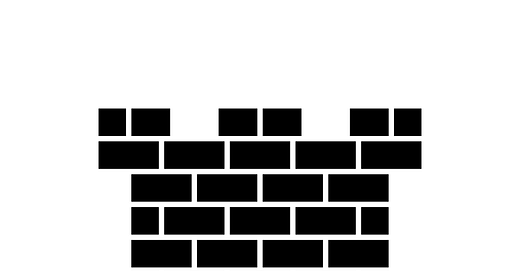Decentralized storage networks must balance data durability, retrieval speed, and storage efficiency—all while keeping costs low. Traditional approaches relied on simple replication, which is reliable but wasteful and costly. The answer? Erasure coding—a sophisticated technique used in high-reliability data systems, now optimized for decentralized storage by Walrus.
This post will explore:
✅ What erasure coding is
✅ Its origins and real-world applications
✅ How Walrus improves upon traditional erasure coding
✅ Why this matters for decentralized storage
📜 A Brief History: Where Erasure Coding Comes From
Erasure coding was first introduced in the 1960s in telecommunications to improve error correction in noisy data channels. By the 1980s, it was widely used in RAID (Redundant Array of Independent Disks) storage to improve fault tolerance. Today, it underpins:
Cloud storage reliability (AWS S3, Google Cloud)
High-performance computing (HPC) systems
5G and satellite communications
Blockchain storage solutions like Walrus
Traditional cloud storage providers like Amazon S3 use erasure coding to reduce data redundancy costs while improving availability. However, their implementations are centralized and require trust in a single provider. Walrus takes erasure coding a step further—optimizing it for decentralized networks.
💡 How Erasure Coding Works
Instead of replicating entire files multiple times, erasure coding splits data into smaller fragments and adds extra "parity" fragments. This allows the original data to be reconstructed even if some fragments are lost.
🔹 Example:
A file is split into 10 data fragments, and 5 additional parity fragments are created. The system can rebuild the entire file using any 10 out of the 15 fragments, meaning:
✅ Better fault tolerance (can lose up to 5 fragments)
✅ Lower storage overhead (storing 1.5x instead of 3x)
Instead of storing three full copies of a file (3x the space cost), Walrus' erasure-coded approach reduces redundancy costs while maintaining data integrity.
🚀 How Walrus Optimizes Erasure Coding for Decentralized Storage
Walrus Protocol builds upon traditional erasure coding techniques by introducing network-aware, adaptive fragment distribution:
🔹 1. Smart Fragmentation & Parallelized Retrieval
Instead of uniform chunk sizes, Walrus dynamically adjusts fragment sizes based on network conditions.
Retrieval is parallelized—fragments are pulled from multiple storage nodes simultaneously for faster access.
🔹 2. Enhanced Fault Tolerance
Files remain accessible even if a significant portion of the network is down.
Unlike centralized cloud storage, where an outage in a single data center can cause service disruptions, Walrus spreads data across independent nodes globally.
🔹 3. Cost Efficiency & Scalability
Older decentralized storage networks relied on triple replication (3x the cost).
Walrus’ erasure coding implementation typically achieves redundancy with only 1.5x the storage overhead, cutting costs by up to 50% compared to naive replication.
🔹 4. No Single Point of Control
Each file fragment is cryptographically secured before being distributed, ensuring no single entity can access full files.
Unlike AWS S3, which controls all erasure-coded storage within a single provider ecosystem, Walrus ensures true decentralization.
📊 Comparing Walrus’ Erasure Coding to Other Models
🔑 Why This Matters for Decentralized Storage
1️⃣ Lower Costs Without Compromising Redundancy
Instead of 3x replication, Walrus’ erasure coding keeps full data durability with only ~1.5x storage overhead.
This means users pay less for the same reliability.
2️⃣ Faster, More Reliable Retrieval
With parallelized fragment recovery, Walrus ensures files can be accessed faster than traditional sharding models.
No single bottleneck for retrieval.
3️⃣ True Data Ownership & Security
Erasure-coded fragments are encrypted before distribution, meaning no single node stores an entire file in plaintext.
Users remain in full control of their data, unlike traditional cloud models.
📢 Erasure Coding: The Future of Scalable, Decentralized Storage
Erasure coding elevates decentralized storage beyond early-generation models—providing the best balance of:
✅ Lower costs than traditional replication
✅ Resilient, secure, and globally distributed storage
✅ High-speed retrieval with network-aware optimizations
By leveraging next-gen erasure coding, we can offer enterprise-grade reliability without centralized control—making decentralized storage not just viable, but superior.
💡 Decentralized storage is evolving—and we’re excited to see where it takes us.
#WalrusCountdown #DecentralizedStorage #ErasureCoding #Web3 #DataSecurity




